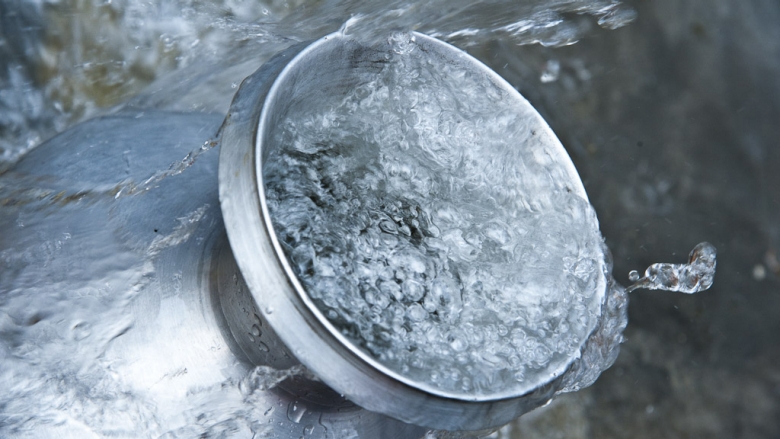In Bangladesh, about 20 million people still lack access to safe drinking water. Since 1998, the World Bank has supported the government to improve safe water availability. Built on the experience of two earlier projects, the Bangladesh Rural Water Supply and Sanitation Project (BRWSSP) follows a community participatory and strong monitoring process to provide hygienic sanitation and safe water to 1.2 million people in arsenic hot spots and salinity prone coastal areas.
The project constructs piped water supply schemes and installs deep tube wells in rural areas where shallow aquifers are highly contaminated by arsenic, salinity, and other pollutants such as iron and bacterial pathogens. The World Bank committed $42.2 million for the BRWSSP in March 2012, and the project will end on 2017.
Approach
The project scales up piped and non-piped water facilities to provide safe water to villagers in 383 unions (lowest tier of local government) in 33 districts with acute arsenic contamination and low access to a safe water supply. BRWSSP is also constructing 14,000 water points, primarily deep tube wells along with pond sand filters, Arsenic Iron Removal Plants, and Rain Water Harvesting units, where the piped water supply is not geographically or economically viable.
Community Participation
The project follows a community participatory process -- communities decide on mitigation options, installation sites and maintenance, and these are cross-checked by the Department of Public Health Engineering (DPHE). The Union Councils own the infrastructure assets. The piped and non-piped water schemes, and the hygienic sanitation facilities, are implemented through local partnerships involving communities, local governments, non-governmental support organizations, local private operators, community-based organizations and other entrepreneurs, following a Public-Private Partnership model.
Monitoring the Water Quality
Based on the lessons learned from previous projects, the BRWSSP has strengthened water quality monitoring protocols. Water quality checks are carried out twice for installed water points. This enables the monitoring of water quality over a period of time so that consistency of water quality and reliability is ensured. DPHE laboratories test all water points following installation. DPHE also undertakes random Quality Checks (QC) at 10% of installed water points within three months of commissioning of the new wells under the project. The project has monitored 300,000 existing tube wells to ensure arsenic safety. BRWSSP has also initiated third-party monitoring by independent entities like the International Centre for Diarrhoeal Disease Research, Bangladesh (ICDDR,B).
New water drilling contracts encourage the drillers to report on water quality. If the water quality of a new well is found to be contaminated, an arsenic removal plant is added to ensure a safe water supply. BRWSSP also works with DPHE to introduce a registration system for drillers to train and equip them to test for arsenic.
Community Awareness for Unsafe Red Tube Wells
If a tube well is found to have arsenic above the contamination standard, it is painted red - safe tube wells are painted green. Continuing public awareness campaigns are undertaken to ensure that rural people recognize that “red” tube wells are unsafe for drinking water. The community awareness program is supplemented by arsenic screening of existing wells, and development of community action plans for new tube well installations.
Tap water brings new hope for rural women
The project and its predecessor Bangladesh Water Supply Program Project (BWSPP) piloted small scale piped water with local community and private sector capital financing. The local government was involved in bringing tapped water to rural homes for the first time in Bangladesh addressing the arsenic, saline and iron issues. The project is facilitating rural piped water supply schemes through Private Public Partnership arrangements in 37 villages on a pilot demonstration basis.
Geographic Information System mapping
The World Bank is considering introducing rapid interim evaluation of water-point siting, water quality and equity through Geographic Information System (GIS) mapping of arsenic contaminated and project water points to understand the union-scale effectiveness and equity of water point siting. This would be supplemented by third party monitoring of randomly selected wells to confirm existence, functionality, water quality, usage and community safety.
Safe Sanitation
BRWSSP also provides incentives to communities to construct hygienic latrines; strengthen the market’s response to increasing demand through capacity building of the local sanitation entrepreneurs; and increase the government's role to ensure that latrines are maintained and accessible to all.
Results
· 924,000 people with access to improved water sources
· 14,000 community water points (tube wells) constructed or rehabilitated
· 100% new tube wells tested for water quality
· 28,000 new piped household water connections
· 275,000 people with access to hygienic latrines
· 1,199,000 people with access to improved water resources and hygienic latrines

